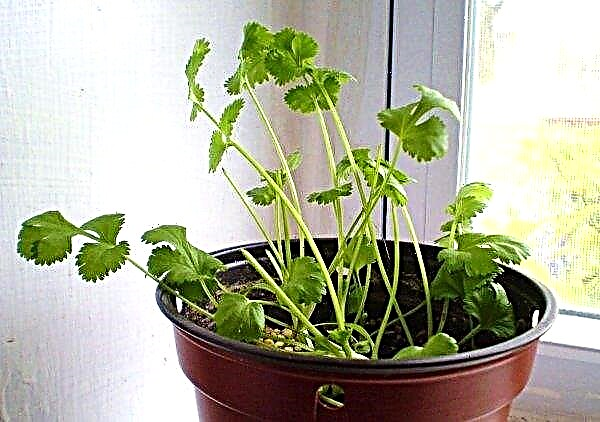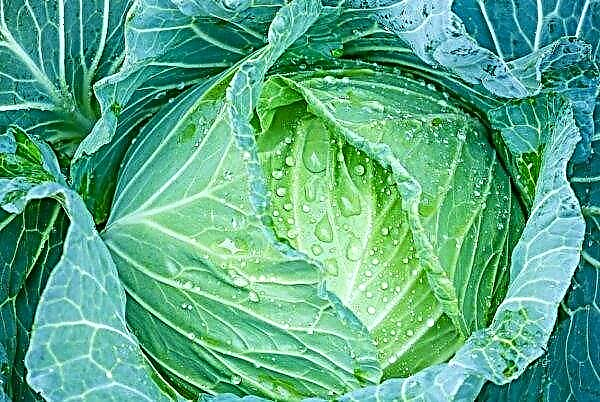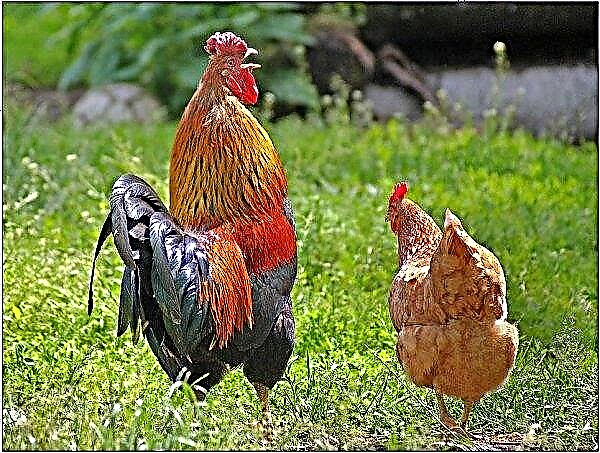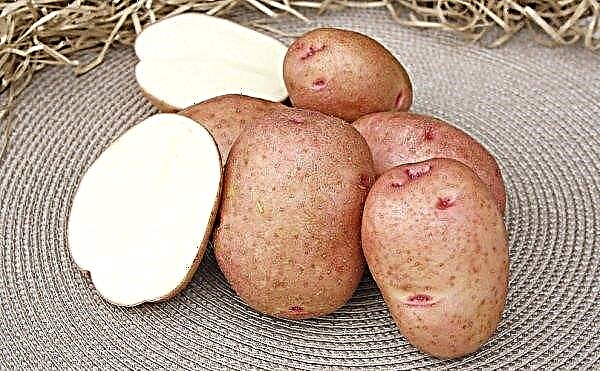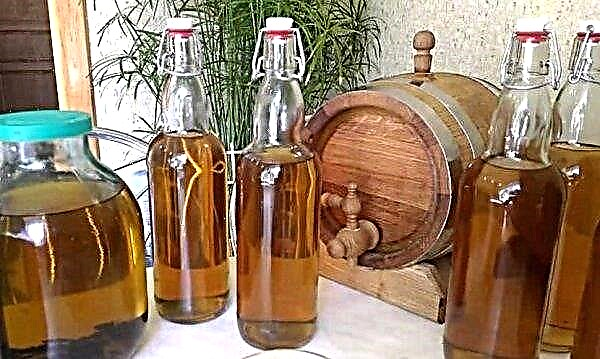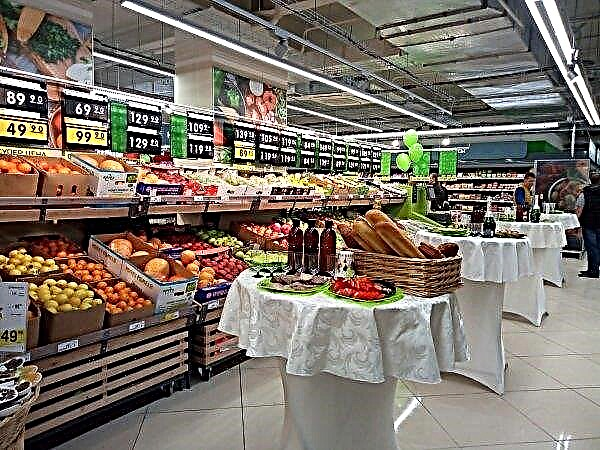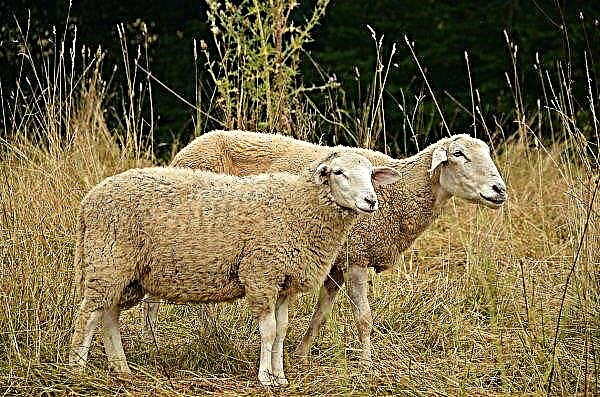Every year, thousands of summer residents are faced with a number of problems when growing fruit crops. One of the most common among them is the formation of yellow spots on foliage and fruits of tomatoes (tomatoes). They cause extensive damage to plant tissues, which soon leads to their drying and death. However, many do not know what causes the formation of yellow inclusions on tomatoes, and how to deal with it. We will understand this problem in detail, and also describe how it can be effectively overcome.
Optimal conditions for growing tomatoes
Despite the high yield, the cultivation of tomatoes is considered a rather difficult task. This plant among summer residents is considered to be whimsical to the living conditions, so many still can not achieve large and juicy fruits.
When growing tomatoes, first of all, it should be remembered that this culture came to us from the hot equatorial regions, so warming and intense light will be required for its fruiting. The optimum temperature for breeding is considered to be around + 20–25 ° С, however, the seeds of the culture germinate at +15 ° С. At the same time, beds with tomatoes should be in an open area, since any shadow inhibits the growth of tomatoes and ripening fruit
For the proper formation of plants, compliance with the moisture regime will be required. The optimum humidity is considered to be 50-60%, soil - about 65-75%. Demanding tomatoes to the soil, they grow best on well-fertilized loamy and sandy loam substrates. Important for tomatoes and predecessor. Best culture grows after cucumbers, cabbage and legumes.Did you know? Despite the fact that officially tomatoes are considered a vegetable, from a botanical point of view, the fruits of the crop are berries, which automatically credits the plant to fruit.
Why do yellow spots appear on tomatoes and what should I do
Yellowish spots and dots on tomatoes can have a variety of reasons. Among them, there is a lack of lighting and nutrients, as well as damage to plants with various infectious diseases.

Sometimes the problem can be fixed on its own, but most often with an untimely stopping, it leads to the death of tomatoes. Let's look at what kind of pathology it is, why such a phenomenon arises and what tomatoes should be treated for.
Diseases
The first who should be suspected of the appearance of yellowness of tomatoes are pathogenic microorganisms and fungi. They willingly settle in the tissues of tomatoes, causing their progressive destruction. But in order to eliminate dangerous invasion, you need to deal with the main symptoms of specific lesions and identify the main pathogen.
Late blight
Late blight is a fungal infection of fruit crops caused by lower fungi of the genus Phytophthora. The disease is a specific disease that develops on members of the nightshade family, but other cultures can also affect the fungus.

The main symptoms of the lesion:
- brown spots on fruits and leaves, surrounded by light green or yellow borders;
- snow-white coating on the lower parts of the leaves;
- drying of inflorescences and peduncles;
- extensive putrefactive foci (in the advanced case).
Recommended reading

- low plant immunity;
- excessive watering of plantings;
- non-observance of crop rotation rules;
- lack of phosphorus and potassium in the soil.
- "Albite";
- Oksikhom;
- "Profit Gold";
- "Speed".
- a solution of kitchen salt - 250 g / 10 l of water;
- infusion of wood ash - half a bucket of ash is poured with 10 liters of water, and then the mixture is infused for 3 days;
- with a solution of fermented kefir - 1 l of kefir / 10 l of water.
Important! To prevent the development of late blight in the next season, the affected parts of the plants should be cut and burned.
Brown spotting
Brown spotting is a defeat of cultivated plants caused by specific fungi representing the genus Pseudopeziza. Infection is one of the most dangerous in gardening, only one infected plant can cause the development of pathology throughout the plantation. Thanks to this, tomato yields can drop sharply, up to 20% of the biological norm.

The disease manifests itself with the following symptoms:
- light green or yellow-green spots on the leaves and stem;
- inhibition of fruit growth and ripening;
- with untimely treatment, the spots become brown, and the affected area acquires a viscous putrefactive consistency.
- non-compliance with crop rotation at the site;
- damage to tomatoes during grooming;
- excessive watering of beds;
- neglect of the general rules for the prevention of bacterial invasion of tomatoes.
Of the folk methods, the following are popular:
- spraying with infusion of garlic - in 10 l of water for a day, insist 500 g of finely chopped garlic;
- watering the beds with a solution of wood ash - 300 g of ash are poured into 1.5 liters of water, and then put on fire and boiled for 15 minutes, the resulting solution is filtered and diluted in 9 liters of water;
- potassium permanganate treatment - a pale pink solution should be made from potassium permanganate, and then carefully spray the affected tomatoes with it.
Powdery mildew
Powdery mildew is called an infectious infectious disease caused by order marsupials Erysiphales. Pathology is considered one of the most common among cultivated plants; its pathogen successfully develops both on fruit species of plants and on ornamental ones.

To distinguish powdery mildew from other diseases will help to identify characteristic symptoms:
- white, white-yellow plaque on leaves, stem and fruits;
- small drops of liquid on the surface of a white coating;
- with complete damage to plants, their leaves dry and fall off.
- thickened plantings of tomatoes;
- sudden changes in temperature;
- high humidity combined with high temperature.
For this, plants are treated with the following chemicals:
- Bayleton;
- "Rayok";
- "Topaz";
- Tilit
- "Topsin";
- "Fundazole".
If you grow vegetables in the organic farming system, spraying the beds of powdery mildew will help spraying with the following home remedies:Important! Powdery mildew pathogens are highly mutagenic, which gives them the ability to instantly adapt to fungicides, so several drugs should be used simultaneously to fight the infection.
- milk solution - prepare it from 7 l of water, 3 l of whey and a teaspoon of copper sulfate;
- onion infusion - 200 g of onion husks pour 10 l of boiling water, after which the mixture is insisted for 2 days.
Mosaic
Mosaic is a complex viral infection of tomatoes caused by a specific pathogen. Tomato mosaic virus. The disease is considered one of the most dangerous, it leads to a sharp inhibition of plants, as well as a decrease in their productivity. Often the infection causes a decrease in immunity, in which case the mosaic is accompanied by multi-strain infection, which is practically not treatable.

The disease manifests itself with the following symptoms:
- small yellow or yellow-green dots appear on the leaves, which eventually turn into a characteristic mosaic pattern throughout the green mass;
- the leaves sharply decrease in size, curl up or take the form of fern foliage;
- the fruits are significantly reduced in size;
- the stalk appears putrefactive damage, causing death of the fruit.
- low immunity;
- non-compliance with the general rules of agricultural technology for growing tomatoes;
- excessive humidity in the garden in combination with low temperatures;
- development of blood-sucking insect vectors on a bed;
- care of plants with infected garden tools.
Mosaic treatment is quite difficult. At the first sign of damage, infected parts of the plants are removed and disposed of. After this, the sections are treated with a pale pink solution of potassium permanganate or hydrogen peroxide.
After this, the plants are sprayed with a solution:
- "Karbofosa";
- "Maxim";
- Lamador.
Did you know? The homeland of tomatoes are tropical and subtropical regions of South America. Until now, on the territory of the continent you can find wild-growing tomatoes, which gave birth to all modern productive varieties.
Other reasons
One of the main reasons for the yellowness of tomatoes can also be careless care of the beds. As a result of this, plants are exposed to all kinds of negative factors, which can have both short-term and permanent effects. Despite the fact that they often do not cause complex changes, they should be approached as soon as possible, since tomato productivity depends on this.
Microclimate
Violation of the growing conditions of a vegetable instantly affects its appearance and productivity. Most often, this is affected by watering and temperature conditions, especially when growing tomatoes in greenhouse conditions. The temperature regime at the place of tomato growth should be constant and with minimal daily fluctuations. With a difference of day and night temperatures of about 10 degrees or more, the culture will hurt, which is manifested by yellow spotting.

Despite the fact that tomatoes are moisture-loving plants, they require gentle watering. In this case, water must be preheated to ambient temperature. Neglect of these rules leads to frostbite and decay of small roots in the upper layers of the soil, due to which foliage lacks nutrients. This causes the appearance of yellow spots, and with prolonged exposure - and the death of the stands.
Transplant root damage
Often, yellow spots on tomatoes are observed after transplanting into open soil. This is explained by damage to the delicate root system due to a sloppy transplant. Usually, the plants recover on their own over several weeks, but quite often root damage causes weakening of the tomatoes, which creates ideal conditions for the development of various diseases.
Important! Damage to the roots of tomatoes can also occur as a result of improper weeding of beds, therefore, before carrying out the procedure, it is necessary to familiarize yourself with the basics of agricultural technology for its implementation.
Lack of micro and macro elements
Lack of minerals does not cause yellowing of tomatoes very often, but on poor soils such phenomena are traditional problems. In this case, pathology can be observed both with a deficiency of micro and macro elements, and with their overabundance. That is why tomato cultivation on poor substrates should be approached with particular attention.

The following micro and macro elements are considered the most important for the safe growth and development of tomatoes:
- nitrogen;
- magnesium;
- iron;
- calcium;
- sulfur.
Sunburn
This problem is especially common in the southern regions. In warm climatic regions, quite intense solar radiation is observed, due to which tomatoes can receive burns of green mass. It is usually quite difficult to eliminate such processes, since tomatoes do not tolerate partial shade, however, a transparent shelter made of polyethylene or plastic materials will help to solve the problem.

Sunburns can also occur in temperate regions. The reason for this is midday watering. During irrigation, splashes of water fall on the leaves of tomatoes, sliding into small drops. Such an education plays the role of a tiny magnifier, passing through which, sunlight is amplified several times, and then causes local tissue burns.
Preventive measures
In order to avoid the defeat of tomatoes with yellow spots, you should:
- it is imperative to carry out pre-plant disinfection of seeds and soil;
- resort to crop rotation on the site;
- observe agricultural techniques for growing tomatoes;
- timely feed tomato plantations;
- be sure to disinfect garden equipment before working with plants;
- carry out preventive treatment of plants with fungicides and bactericidal agents;
- treat seedlings before planting in open soil.
The formation of yellow spots on tomatoes is considered a fairly common problem. All kinds of infections cause it, as well as non-compliance with the conditions for keeping tomatoes. Due to this, the crop dramatically loses its yield, and its fruits become unusable. When cultivating tomatoes on the site, it is imperative to follow the basic rules and norms for growing solanaceous, including the necessary preventive measures to prevent infections in the beds.


